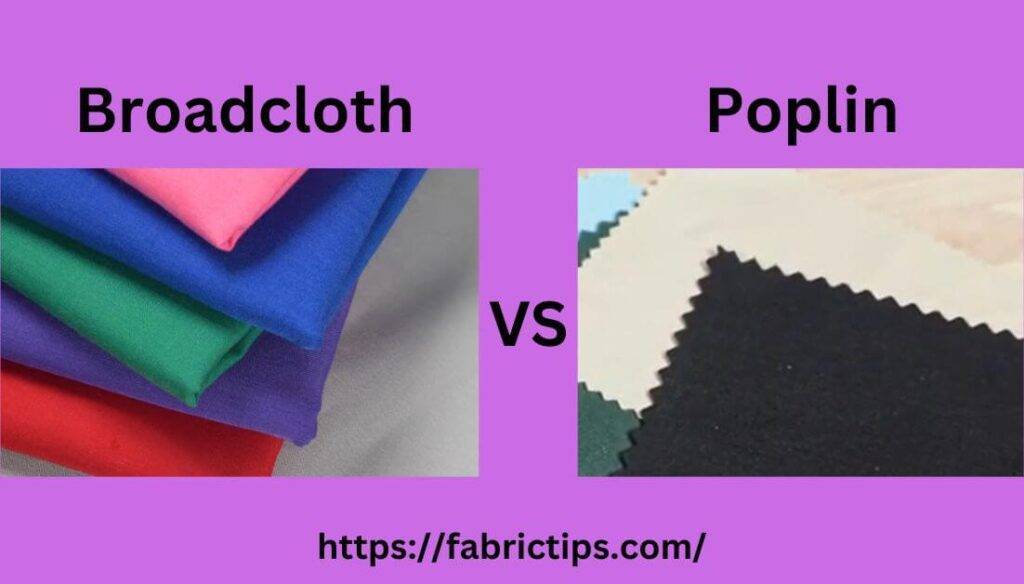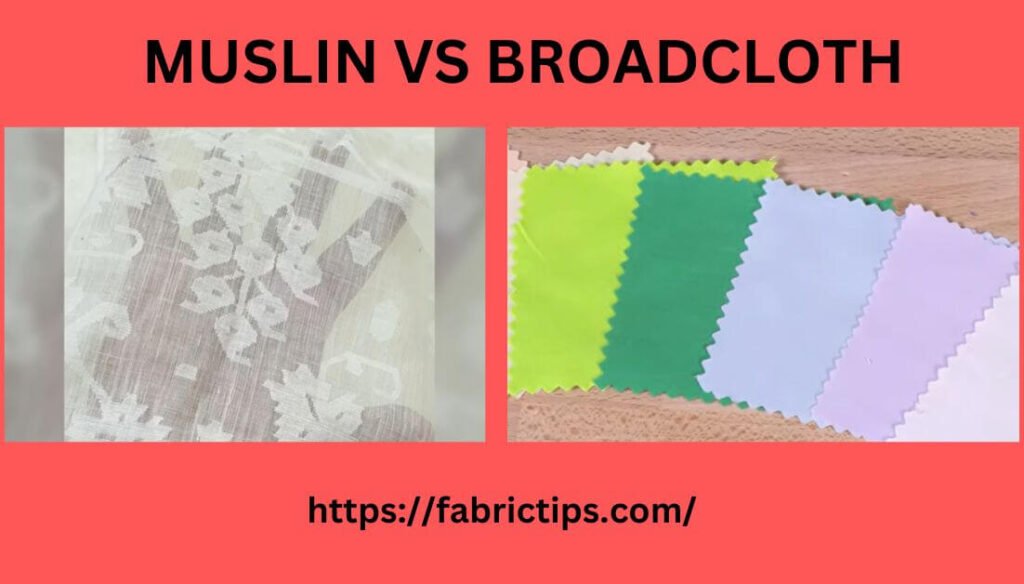Last Updated on November 27, 2025 by Wahid
Poplin and Oxford are popular fabrics in the world of fashion. Both have unique characteristics and uses.
Understanding the differences between Poplin and Oxford can help you make better clothing choices. Each fabric has its own strengths, making them suitable for different occasions and preferences. Knowing these differences can save you time and money when shopping. In this blog, we’ll explore what sets these two fabrics apart.
We’ll also look at their common uses and why you might choose one over the other. By the end, you’ll have a clear idea of which fabric suits your needs best. Let’s dive into the details of Poplin and Oxford fabrics.
Fabric Composition
When it comes to choosing the perfect shirt, understanding the fabric composition is key. After all, the fabric determines how the shirt feels, how it looks, and how long it lasts. Today, we’ll dive into two popular choices: Poplin and Oxford. Both fabrics have their unique qualities and materials that make them special. So, let’s explore the fabric composition of Poplin and Oxford, starting with what they’re made of.
Materials Used In Poplin
Poplin, also known as broadcloth, is a versatile fabric known for its smooth texture and durability. The primary materials used in Poplin are:
- Cotton: Most Poplin shirts are made from 100% cotton. Cotton is breathable, soft, and comfortable, making it ideal for everyday wear.
- Polyester: Some Poplin fabrics blend cotton with polyester. This combination adds strength and reduces wrinkling, perfect for those who dislike ironing.
- Silk: On rare occasions, Poplin can include silk. This luxurious option adds a slight sheen and a smoother feel to the fabric.
The weaving process involves tightly woven threads, creating a fine, crisp finish. Whether you’re heading to a formal event or a casual outing, Poplin offers a clean and polished look.
Materials Used In Oxford
Oxford fabric is known for its durability and slightly textured appearance. It’s often associated with button-down shirts, providing a classic and timeless look. The key materials used in Oxford are:
- Cotton: Like Poplin, Oxford fabric is primarily made from cotton. Cotton ensures the fabric is breathable and comfortable.
- Polyester: Some Oxford shirts include polyester blends. This addition enhances durability and makes the fabric easier to care for.
- Linen: Occasionally, Oxford fabric can feature linen. Linen adds a natural texture and is perfect for warm climates.
Oxford fabric is characterized by its basket weave structure, which gives it a slightly thicker and more textured feel compared to Poplin. This makes Oxford ideal for a more relaxed and casual style, yet still suitable for semi-formal occasions.
So, there you have it – a closer look at the materials used in Poplin and Oxford fabrics. Whether you prefer the smooth elegance of Poplin or the rugged charm of Oxford, understanding the fabric composition helps you make an informed choice.
Weave Patterns
Understanding weave patterns is crucial in selecting the right fabric. Poplin and Oxford are two popular choices. Each has its unique characteristics and benefits. Let’s dive into the specifics of their weave patterns.
Poplin Weave Characteristics
Poplin uses a simple over-and-under weave. This creates a smooth, fine texture. The fabric feels lightweight and comfortable. The tight weave makes it durable and crisp.
Poplin is ideal for shirts and blouses. It resists wrinkles and maintains its shape well. The smooth finish adds a touch of elegance. Poplin works for both casual and formal wear.
Oxford Weave Characteristics
Oxford fabric features a basket weave pattern. This involves two yarns crossing each other. The result is a slightly textured surface. It feels heavier and more substantial than poplin.
Oxford cloth is versatile and durable. It has a casual, sporty look. Many prefer it for button-down shirts. The fabric softens with each wash. Oxford is great for everyday use.
Texture And Feel
When it comes to choosing the perfect shirt, texture and feel play a huge role. The fabric’s texture can make a difference in comfort, appearance, and even how the shirt drapes on your body. Today, we’re diving into two popular fabrics: Poplin and Oxford. Let’s explore their unique textures and see which one might be the best fit for you.
Poplin Texture
Poplin, also known as broadcloth, is famous for its smooth and silky texture. Imagine running your fingers over a surface that feels almost like satin. That’s Poplin for you! This fabric is tightly woven, giving it a fine, sleek finish. Because of its smoothness, Poplin is a favorite for dress shirts. It feels light and cool against the skin, making it perfect for warmer weather. If you’re someone who values comfort and a polished look, Poplin might just be your new best friend.
Oxford Texture
Oxford fabric, on the other hand, has a more pronounced texture. It’s not as smooth as Poplin; instead, it has a bit of a rough feel. But don’t let that fool you—this texture is what gives Oxford shirts their unique charm. The weave is looser, creating a basket-like pattern that you can actually see. This gives the shirt a more casual and durable feel. Oxford shirts are often thicker and heavier, making them ideal for cooler weather or for those who prefer a sturdier shirt. Plus, the slightly rugged texture adds a touch of character to your outfit.
So, whether you’re looking for the smooth elegance of Poplin or the sturdy charm of Oxford, understanding the texture and feel can help you make the best choice for your wardrobe. Happy shopping!
Durability And Strength
Durability and strength are essential factors in choosing the right fabric for your clothing. Poplin and Oxford fabrics each have unique qualities that affect their longevity and robustness. Understanding these characteristics can help you make an informed decision.
Longevity Of Poplin
Poplin is known for its smooth and lightweight texture. Its tight weave offers decent durability. However, due to its fine threads, it may not withstand heavy wear and tear. It is ideal for everyday wear, but heavy-duty use can wear it down faster.
Longevity Of Oxford
Oxford fabric stands out for its durability. Its basket weave structure provides extra strength. This makes it more resistant to damage and wear. Oxford shirts can last longer, even with frequent use. They handle more stress and strain compared to poplin.
Usage And Applications
Poplin and Oxford fabrics offer distinct advantages for various applications. Each fabric’s unique properties make it suitable for specific uses. Understanding their applications can help you choose the right fabric for your needs.
Common Uses Of Poplin
Poplin is a versatile fabric. Its smooth texture and lightweight feel are ideal for dress shirts. Many prefer poplin for its crisp appearance. It is also suitable for blouses and summer dresses. Poplin’s durability makes it a favorite for uniforms. Designers often choose poplin for its ability to hold prints well.
Common Uses Of Oxford
Oxford fabric is popular for casual shirts. Its slightly heavier weight gives a relaxed look. Oxford shirts often feature button-down collars. These shirts are common in both casual and business-casual settings. Oxford fabric is also used for dress shirts with a bit more texture. It is a good choice for school uniforms and sportswear. The durability of Oxford makes it suitable for everyday wear.
Care And Maintenance
Proper care and maintenance of your clothing can extend its lifespan. Different fabrics require specific attention. Poplin and Oxford are popular choices in many wardrobes. Let’s explore how to care for each.
Caring For Poplin
Poplin is a smooth, lightweight fabric. It is often used for shirts. To keep poplin looking fresh, wash it in cold water. Use a gentle cycle. Avoid using bleach. Bleach can weaken the fibers. After washing, hang it to dry. Avoid direct sunlight. Sunlight can fade the colors. If you must use a dryer, choose a low heat setting. High heat can shrink the fabric.
Iron poplin while it’s slightly damp. Use a medium heat setting. This helps remove wrinkles without causing damage. Store poplin shirts on hangers. This helps maintain their shape.
Caring For Oxford
Oxford fabric is known for its durability and texture. It is a bit thicker than poplin. Wash Oxford shirts in warm water. Use a mild detergent. Avoid using bleach. After washing, tumble dry on low heat. High heat can damage the fabric.
Iron Oxford shirts on a medium to high heat setting. Make sure the shirt is damp. This makes ironing easier. Store Oxford shirts on hangers. This prevents creases. With proper care, Oxford fabric can last for many years.
Cost Comparison
When it comes to choosing the right fabric for your clothes, cost is often a significant factor. Poplin and Oxford are two popular fabrics, each with its unique qualities and price points. In this section, we’ll break down the cost comparison between Poplin and Oxford fabrics. This will help you make an informed decision about which fabric suits your budget and needs best.
Price Range Of Poplin
Poplin fabric is known for its smooth texture and lightweight feel, making it a favorite for formal shirts and dresses. But how much does it really cost?
- Affordable Options: Poplin fabric can start as low as $5 per yard for basic, plain options. This makes it a great choice for those on a tight budget.
- Mid-Range Choices: For higher quality Poplin, expect to pay between $10 to $20 per yard. These fabrics often have a finer weave and better finish.
- Luxury Selections: Premium Poplin fabrics, especially those made from high-quality cotton or with special treatments, can cost upwards of $30 per yard.
So, whether you’re looking for something budget-friendly or a bit more luxurious, Poplin offers a range of prices to fit your needs.
Price Range Of Oxford
Oxford fabric, with its distinctive basket-weave texture, is popular for both casual and formal wear. Let’s see how its cost compares to Poplin.
- Entry-Level Prices: Basic Oxford fabric starts around $8 per yard. These are typically less refined but still durable and stylish.
- Moderate Cost: For better quality Oxford, prices range from $15 to $25 per yard. These versions often feature finer threads and a softer feel.
- High-End Varieties: Top-of-the-line Oxford fabrics, especially those made from premium cotton or with special finishes, can go above $40 per yard.
Oxford fabrics generally cost a bit more than Poplin, especially at the higher end. However, the added durability and texture can make it worth the investment.
In conclusion, both Poplin and Oxford offer a spectrum of prices to suit different budgets and preferences. Whether you prioritize affordability or are willing to splurge on luxury, understanding the cost differences helps you make the best choice for your wardrobe.
Frequently Asked Questions
What Is The Difference Between Poplin And Oxford Cloth?
Poplin is lightweight and smooth with a tight weave. Oxford cloth is heavier, more textured, and has a basketweave pattern.
What Are The Disadvantages Of Poplin Fabric?
Poplin fabric wrinkles easily and requires frequent ironing. It can feel stiff and less breathable. It might not provide much stretch, limiting comfort in some clothing styles.
Is Poplin Better Than Cotton?
Poplin and cotton have different qualities. Poplin is durable and wrinkle-resistant. Cotton is breathable and soft. Choose based on your needs.
Why Is Poplin So Cheap?
Poplin is cheap due to its simple weave, cotton or polyester material, and mass production. This keeps costs low.
Conclusion
Choosing between Poplin and Oxford depends on your style and needs. Poplin offers a smooth, lightweight feel. Ideal for dress shirts and formal events. Oxford provides a textured, durable fabric. Great for casual wear and everyday use. Both have unique benefits and serve different purposes.
Consider what matters most for you. Comfort? Durability? Style? Make an informed choice based on your preferences.

